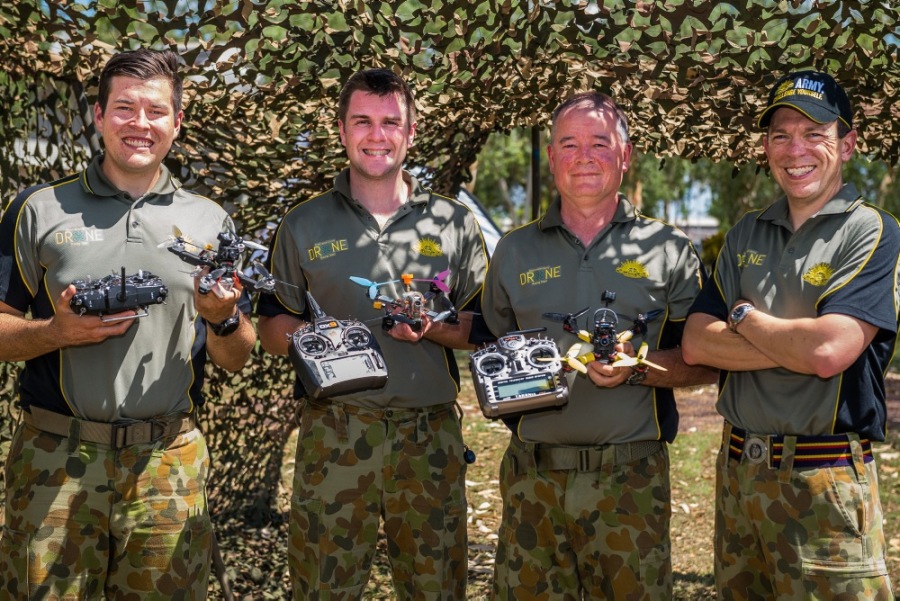A Brief Review of the Key Hypnotic Elements of Milton H. Erickson’s Handshake Technique

in the The Milton H. Erickson Foundation
Newsletter Spring 2016 Vol 36 No 1, Pages 12 –13.
Milton H Erickson was no doubt a master of masters in inducing hypnotic responses for clinical purposes.
Dr. Erickson was instrumental in developing a number of indirect hypnotic techniques and strategies,including interpersonal and nonverbal or pantomime tactics (Erickson, 1958, 1964, 1966; Haley, 1967).
One fascinating technique that stands out was the “handshake hypnotic induction technique.”
The purpose of this article is to outline the key elements and a procedure of the therapeutic hypnotic handshake
induction technique.
What is a Trance Experience?
Controversies over the nature and definition of trance phenomena often involve the contextualized experienced “state” vs. nonstate. The present authors consider a trance experience as a contextualized state with multiple levels, expressions, and facets. The central aspect includes an intense focusing and sense of detachment (dissociated response). One particular behavior directly associated with the handshake technique is the dissociative cataleptic response.
Dissociative Cataleptic Response
Inducing a cataleptic response is the key to the handshake technique. Edgette & Edgette (1995) categorize the handshake technique as a method of inducing hypnotic catalepsy. Catalepsy is the induced immobility of various limbs and/or entire body. Edgette & Edgette (1995 p. 173) define catalepsy as, “…immobility in one or more parts of the body.” Catalepsy has been defined as an involuntary tonicity of the muscles (Kroger, 1977), and a suspension of voluntary movement and condition of well-balanced tonicity (Erickson & Rossi, 1981). Muscles are felt as being in balance and comfortable, neither too tense nor too limp. The client/subject maintains or sustains a suspended state or immobilized position for a long period of time.
Handshake Technique Procedure
Therapy involves communication within a change-oriented context in which the therapist engages the client in conversation, forming interactions, which can start with a simple handshake. This handshake can be utilized to facilitate the hypnotic elements in these therapeutic conversations.
Erickson and Rossi & Rossi (1976) describe the handshake technique by starting with a firm hand grasp, then slightly adjusting the operator’s fingers, creating momentary confusion by refocusing the subject’s attention with the different sensations felt, as the operator withdraws their hand. As the operator withdraws their hand, the subject’s habitual framework is interrupted, thus creating a hypnotic touch.
This procedure can be detailed into the following steps:
1. Engage with client or subject.
2. Gaze into the client’s or subject’s eyes (as part of the initial exchange via eye contact).
3. Slowly reach out to shake or grasp the hand.
4. Grasp the client’s hand in a normal handshake.
5. Slow the handshake down by pacing and leading the client’s hand during the clasp.
6. Shift the touch and pressure, slowly releasing the handshake.
7. Slowly release the hand from the handshake; slide hand away.
8. Meanwhile, if/or when speaking, use a slow, smooth, monotone relaxing voice.
9. Maintain a gaze, looking into the client’s or subject’s eyes, leaving the client’s hand buoyant, as in arm levitation.
10. Direct the client therapeutically, thus utilizing the outcome.
11. If necessary, for reorientation, provide suggestions.
A similar process naturally occurs when taking vitals. Carich and Junge (1990) noticed pantomime hypnotic experiences when taking vitals, particularly pulses. By taking a pulse, for longer than required, the subject’s arm can be suspended in mid-air, forming a cataleptic response. This experience is similar to the handshake technique in developing cataleptic responses.
Key Elements
There are several key hypnotic elements involved in the technique:
1. Fixation of attention or refocusing the client’s attention by:
a. Eye gazes.
b.Touch and pressure.
2. Inducing behavioral suspension or buoyant response (creating a dissociative response).
3. Developing a rhythmic pattern during the process, which includes reduced respiratory rate.
4. Interrupting the subject’s habitual framework, by refocusing one’s attention on different sensations of the handshake.
A key point while engaging the subject/client, is that the individual’s internal focus is fixated on some selected stimuli involving the level of pressure of the grip. Slowing down the movement and touch during the clasp can initiate this.
Also, during the initial engagement, eye gazes create another source of client fixation. By slowing down the shaking of the subject’s/client’s hand, an arm levitation response is induced or created, thus leaving the hand/arm buoyant and totally immobilized. In some cases, the subject or client may be totally immobilized. Finally, the process entails a rhythmic pattern or integration between the therapist and client.
The depth depends upon several factors or conditions:
1. Context of the interaction.
2. Skill and rhythmic pattern of the operator.
3. Level of receptivity and responsiveness of the client.
This is a form of an informal, indirect technique, in which the hypnotic suggestion or induction is delivered through the interaction manifested in the handshake.
The authors further recommend discovering nonverbal touch situations in everyday life, whereby one can utilize and help the subject fix and focus attention inwardly.
Conclusion
Milton H. Erickson was a brilliant therapist and hypnotist who provided different ways, including the handshake technique, to induce and create trance-like therapeutic experiences. In his handshake technique, he utilized the client’s responses and behavior to further enhance hypnotic responses and therapeutic experiences. He used his ability to notice minimal cues or define moments of responses and receptivity, and he learned to access these movements to facilitate the hypnotic handshake technique.
There are a number of applications of the handshake technique, ranging from enhancing rapport to inducing calming responses to relaxation. Upon inducing hypnotic responses, several paths can be taken. Therapeutic messages can be interspersed in the moment. Other ways include bypassing “resistant” responses, or client goal inhibitory responses, creating a window of client receptivity.
References
Carich, M.S. & Junge (1990).
Pulse-Rate Rapid Hypnotic Injection. The American Society of Clinical Hypnosis Newsletter, 31 (2), October, p.2.
Edgette, J.H. & Sasson-Edgette, J. (1995)
The handbook of Hypnotic Phenomena in Psychotherapy. New York: W.W. Norton, C.C. Erickson, M. Naturalistic techniques of hypnosis. American Journal of Clinical Hypnosis, 1958, 1, 3-8.
Erickson, M.
Pantomime techniques in hypnosis and the implications. American Journal of Clinical Hypnosis, 1964, 7, 65-70. (a)
Erickson, M.
The interspersal hypnotic technique for symptom correction and pain control. American Journal of Clinical Hypnosis, 1966, 8, 198-209. (b)
Erickson, M. H., Rossi, E. L., & Rossi, S. I. (1976).
Hypnotic Realities: The Induction of Clinical Hypnosis & Forms of Indirect Suggestions. N.Y.: Irvington: New York
Erickson, M. H. & Rossi, E.L. (1981).
Experiencing hypnosis. NY: Irvington.
Haley, J. (Ed.) (1967).
Advanced technique of hypnosis and therapy. NY: Grune & Stratton.
Kroger, W. (1977).
Clinical & Experimental Hypnosis. Philadelphia, PA.: Lippincott.
Articles from Louise Smith
View blog
The Australian Army has embraced the future and created the Australian Army Drone Racing Team (ADRT) ...

Gustav Klimt (July 14, 1862 – February 6, 1918) · from Austrian is one of my · favourite painte ...

Producer Buzzes · WHO'S the Therapist Here? · People have told me things ever since I can remember. ...
Related professionals
You may be interested in these jobs
-
QET DATA Senior QA TDM Engineer
Found in: Talent AU C2 - 2 hours ago
Snaphunt Melbourne, Australia Full timeThe Offer · Work within a company with a solid track record of success · Work alongside & learn from best in class talent · Join a well known brand within IT Services · The Job · Your responsibilities will include: · Lead developer for the implementation and maintenance of the Te ...
-

Strategy Associate
Found in: JobGet AU C2 - 23 hours ago
Climate Salad Sydney, AustraliaWaterfall is a dynamic and innovative climate fintech start-up dedicated to revolutionizing the funding of climate solutions projects. We leverage cutting-edge technology to provide more efficient, de-risked investment into a variety of climate asset classes including carbon, nat ...
-

Services Operations Manager
Found in: JobGet AU C2 - 23 hours ago
Hitachi Automotive Systems Americas, Inc. Mackay Regional, AustraliaServices Operations Manager page is loaded · Services Operations Manager · Apply locations Lilydale, Victoria, Australia time type Full time posted on Posted Yesterday job requisition id R Location: · Lilydale, Victoria, AustraliaJob ID: · R0044832Date Posted: · Company Name: · ...


Comments
Louise Smith
6 years ago #7
That sounds great Ella. Yes eye contact is the second most important aspect with kids For me knowing their name is the most important. Let me know how your handshaking goes "I love The Solution Focused Approach! "we" love M. Erickson!" Me too. I use it a lot.
Louise Smith
7 years ago #6
Thank you. It's a therapy technique. But I think it has some application to real life especially first time meetings ?
Jan 🐝 Barbosa
7 years ago #5
There Are 2 Key Moments When You Meet Someone... How You Look And The First Handshake...
Louise Smith
7 years ago #4
Louise Smith
7 years ago #3
Javier Cámara-Rica 🐝🇪🇸
7 years ago #2
Louise Smith
7 years ago #1